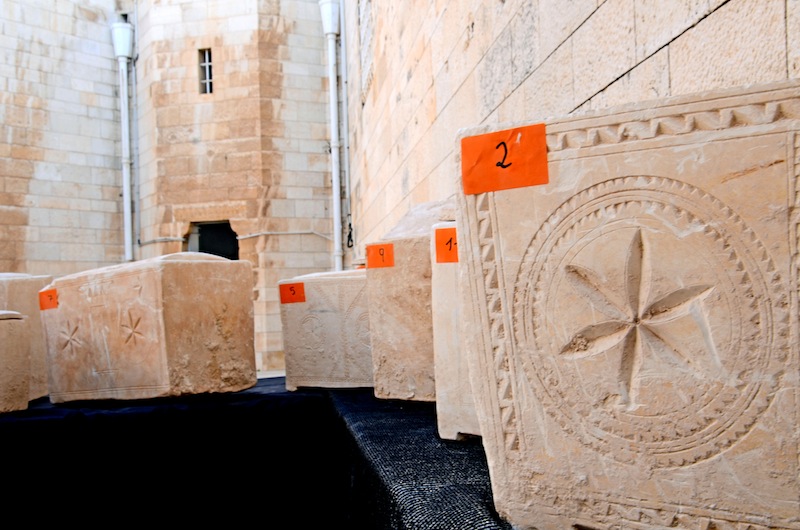11 Stolen Burial Boxes Seized by Israeli Authorities

Eleven ancient stone chests filled with bones were confiscated by Israeli authorities during a smuggling bust early Friday (March 28).
Several suspects were arrested as they allegedly tried to close a deal to sell the artifacts to Jewish merchants at the Hizma checkpoint north of Jerusalem, the Israel Antiquities Authority (IAA) announced.
The 2,000-year-old burial boxes, or ossuaries, which are covered in Hebrew inscriptions and traces of paint, were seized by inspectors with the IAA's Unit for the Prevention of Antiquities Robbery and detectives and patrolmen of the Shefet police station in Jerusalem. [See Photos of the Stolen Bone Boxes]
Archaeologist Eitan Klein with the IAA said the artifacts are "singular finds" that were likely looted from a burial cave in Jerusalem.
"Remnants of paint remained on top of the ossuaries, and the containers themselves belong to the group of 'magnificent Jerusalem' ossuaries that were manufactured in the city in antiquity," Klein said in a statement.
Jews of the early Roman Empire commonly practiced so-called ossilegium during the first century B.C. and the first century A.D. As part of this funerary ritual, the dead were initially laid to rest in a burial tomb. A year later, after the body's flesh had decomposed, relatives collected the bones and put them into an ossuary for a secondary burial.
Ossuaries previously discovered in Jerusalem have become archaeological sensations. A controversial one billed as the bone box of James, Jesus' brother, is suspected to be a hoax. Another ossuary that surfaced out of the illegal antiquities trade in the 1990s is thought to bear an inscription that could reveal the home of the family of Caiaphas, a biblical figure known for his involvement in the crucifixion of Jesus.
Sign up for the Live Science daily newsletter now
Get the world’s most fascinating discoveries delivered straight to your inbox.
Some of the ossuaries that were confiscated last week hold inscriptions in squared Hebrew script as well as Greek lettering. These engravings include names of the dead, such as Yo'azar, a common Jewish name in the Second Temple period, and Ralfin, a less common Hebraized form of an odd Roman name, IAA officials said. The coffins are also decorated with Jewish symbols, such as lilies and six-petal rosettes.
The IAA did not disclose how many suspects were arrested or detail what charges they may face. However, officials did say the suspects were residents of Jerusalem, Tel Aviv and an Arab village called Abadiyah, near Bethlehem in the West Bank. Authorities also noted that antiquities robbery is punishable by five years imprisonment, and antiquities trafficking could lead to a three-year prison sentence.
Follow Megan Gannon on Twitter and Google+. Follow us @livescience, Facebook & Google+. Original article on Live Science










